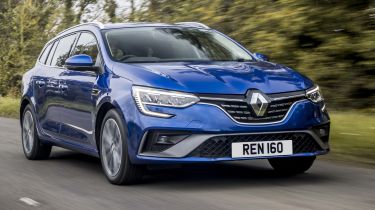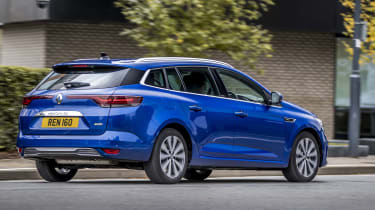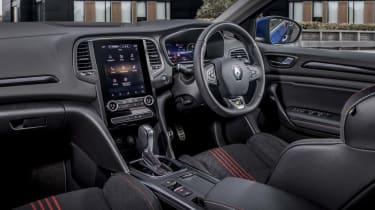Renault Megane Sport Tourer E-TECH hybrid (2020-2022) review
Those after a spacious and cheap-to-run family car should take a close look at the Renault Megane plug-in hybrid estate

Pros
- Good value price
- Free home wallbox
- Practical estate body
Cons
- Fiddly touchscreen
- Slow-witted gearbox
- Interior quality could be better
| Car type | Electric range | Fuel economy | CO2 emissions |
|---|---|---|---|
| Plug-in hybrid | 30 miles | 217mpg | 30g/km |
During its short time on sale, the Renault Megane Sport Tourer E-TECH was one of only a few electrified family estate models available. Its main rivals were the Kia Ceed Sportswagon PHEV (now also discontinued) and the estate version of the Skoda Octavia iV plug-in.
The Megane E-TECH was aimed at buyers unwilling to compromise on space and rock-bottom running costs. Thanks to CO2 emissions of just 30g/km, it made for a spacious company car that didn't break the bank, as Benefit-in-Kind (BiK) tax was very low. That's not relevant to the private buyers looking at used examples of the Megane these days, but if you can plug the car in regularly, you’ll be looking at vastly improved average fuel economy.
A 1.6-litre petrol engine and 9.8kWh battery mean the Megane can drive for around 30 miles on electric power alone – slightly less than the Ceed Sportswagon, but on par with most plug-ins. It’s possible to recharge in around three hours from a home wallbox, but there’s no option for rapid charging.
In pure-electric mode, the Megane is a very relaxing car to drive. With a full battery it’s easy to potter around without waking the engine, while even at higher speeds the cabin stays quiet. When needed, the engine kicks in without fuss, although it's not as smooth as in a more upscale model such as the Volvo V60.
The Renault is a bit on the slow side, and while it’s perfectly capable on faster roads, the seven-speed automatic gearbox is a little ponderous, making more work of overtakes than it ought to – it’s just not very responsive. The Megane is smooth over bumps, however, even on 18-inch alloy wheels.
The car is best suited to short urban commutes – maximising that electric range by leaning on the car’s regenerative braking. It’s not quite capable of one-pedal driving, but the Megane has the ability to slow significantly when you lift off the throttle, feeding energy back into the battery that would otherwise be lost.
The Megane feels its age inside, despite the plug-in hybrid model joining the range at the same time as a mid-life refresh. The portrait touchscreen is a worthy focal point, but the graphics feel tired and it’s not the most responsive system on the market. The digital dials aren’t as sharp as some models in this class, either.
Still, quality is decent and there’s plenty of space to stretch out. There’s loads of room in the rear seats, and the boot is a good shape and size. Those looking for the biggest outright load volume in this class might be better off looking at the Octavia iV plug-in hybrid, but it’s unlikely Megane buyers will feel short-changed. For a more detailed look at the hybrid Megane estate, read on for the rest of our in-depth review...





